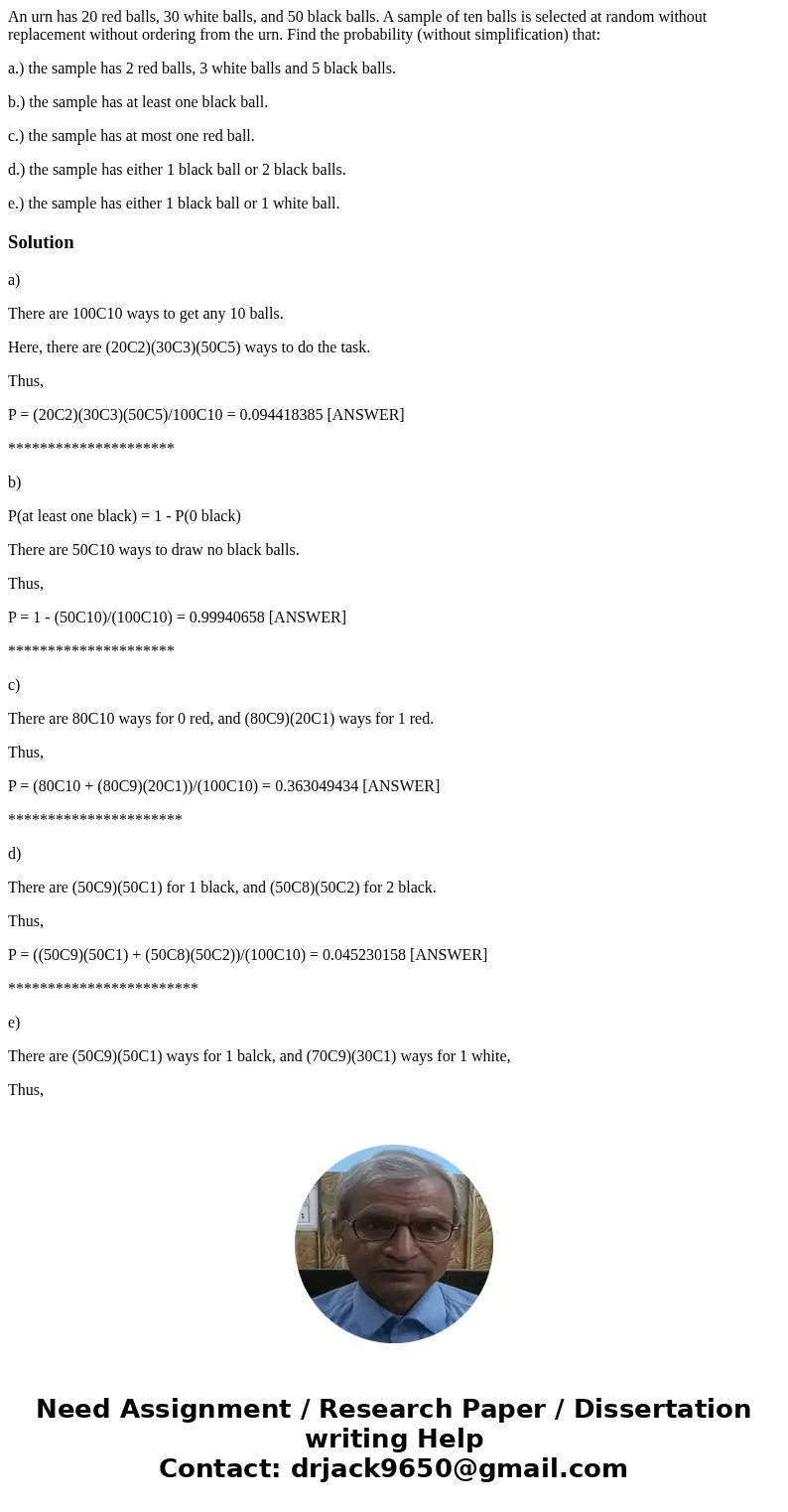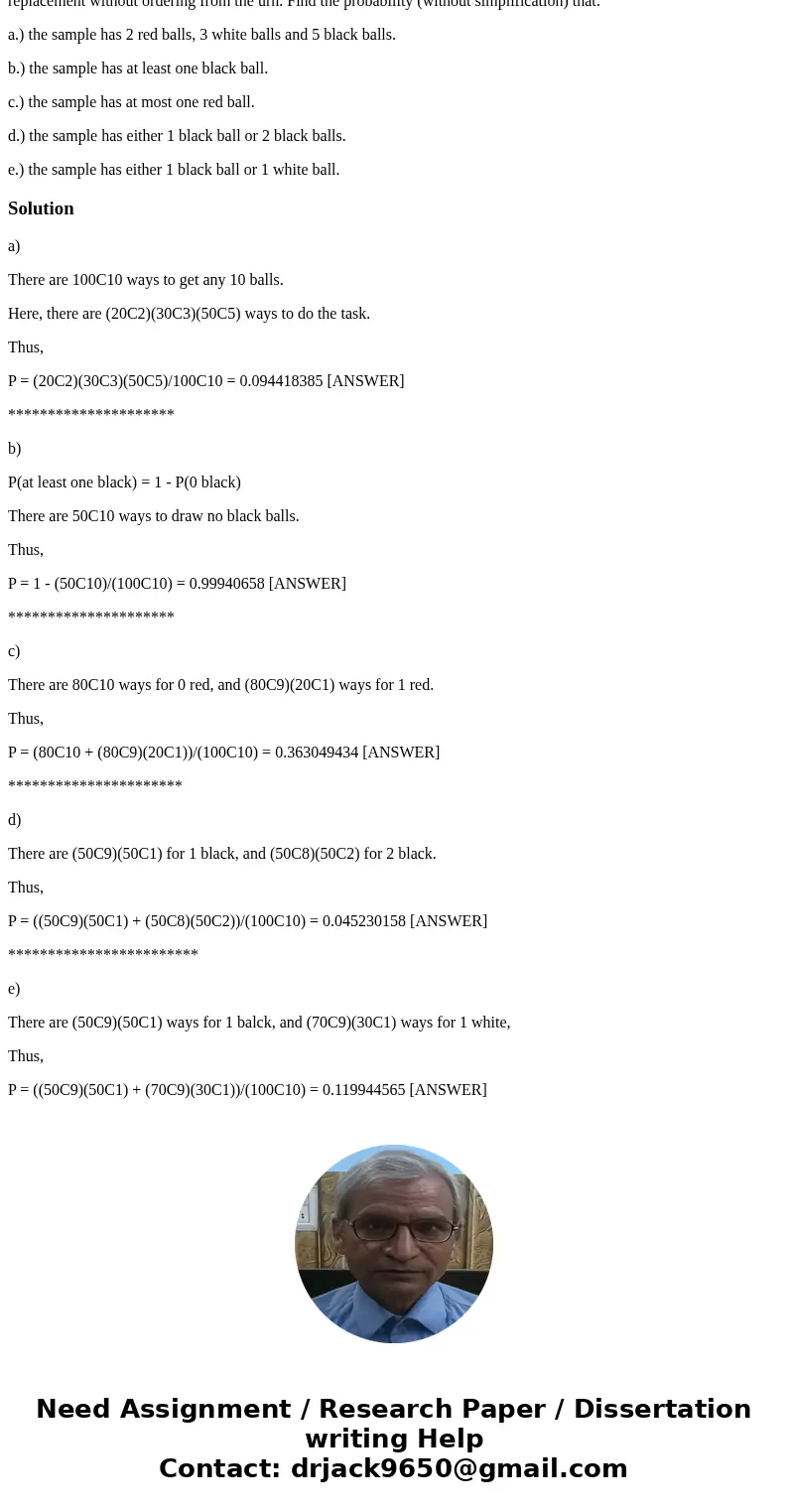An urn has 20 red balls 30 white balls and 50 black balls A
An urn has 20 red balls, 30 white balls, and 50 black balls. A sample of ten balls is selected at random without replacement without ordering from the urn. Find the probability (without simplification) that:
a.) the sample has 2 red balls, 3 white balls and 5 black balls.
b.) the sample has at least one black ball.
c.) the sample has at most one red ball.
d.) the sample has either 1 black ball or 2 black balls.
e.) the sample has either 1 black ball or 1 white ball.
Solution
a)
There are 100C10 ways to get any 10 balls.
Here, there are (20C2)(30C3)(50C5) ways to do the task.
Thus,
P = (20C2)(30C3)(50C5)/100C10 = 0.094418385 [ANSWER]
*********************
b)
P(at least one black) = 1 - P(0 black)
There are 50C10 ways to draw no black balls.
Thus,
P = 1 - (50C10)/(100C10) = 0.99940658 [ANSWER]
*********************
c)
There are 80C10 ways for 0 red, and (80C9)(20C1) ways for 1 red.
Thus,
P = (80C10 + (80C9)(20C1))/(100C10) = 0.363049434 [ANSWER]
**********************
d)
There are (50C9)(50C1) for 1 black, and (50C8)(50C2) for 2 black.
Thus,
P = ((50C9)(50C1) + (50C8)(50C2))/(100C10) = 0.045230158 [ANSWER]
************************
e)
There are (50C9)(50C1) ways for 1 balck, and (70C9)(30C1) ways for 1 white,
Thus,
P = ((50C9)(50C1) + (70C9)(30C1))/(100C10) = 0.119944565 [ANSWER]


 Homework Sourse
Homework Sourse